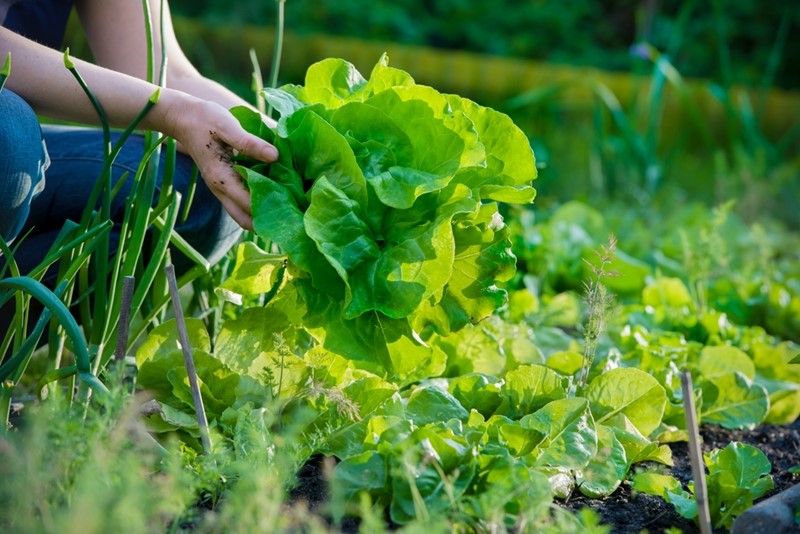Now that the weather’s getting nicer, it’s time to start appreciating the beauty of your yard. One of the best ways to spend some quality time outdoors is growing a vegetable garden. It’s not only a great opportunity to boost your home’s curb appeal, but it’s also a hobby that produces plenty of benefits. From harvesting your own healthy foods to burning off some calories outside, growing a vegetable garden has its healthy advantages, and the garden itself is pretty easy to maintain. For homeowners who are interested in a new leisurely pastime that will be sure to accentuate your yard, here’s a beginner’s guide to growing your own vegetable garden:
Picking a spot
The first thing you’ll have to do when plotting your vegetable garden is choose the best location in your yard to plant it. There is some strategy behind picking a spot, as you’ll have to consider five major factors:
• Sunshine
• Soil
• Proper drainage
• Toxins
• Accessibility

Make sure your garden gets at least six hours of sunshine a day.
First things first: You’ll need to find an area that’s exposed to six to eight hours of sunshine each day, according to Better Home and Gardens. It doesn’t matter what time of day the vegetables receive sunshine, just as long as it’s at least six hours every day. As for soil, find or create a spot that’s both moist and well-drained so the dirt will never dry up easily, taking nutrients away from the vegetables. If you’re struggling to find adequate soil for growing a vegetable garden, you can always consider adding compost or organic matter to the dirt.
Proper drainage means making sure the soil for your garden never gets over flooded. Flooding can be avoided by keeping your garden slightly elevated when you plant it; if your vegetables are planted below a slope or hill, water may flood the roots. You never want to plant a garden near any toxic chemicals, be they leaking oil from a shed or pesticides from the yard. Finally, you’ll definitely want your garden to be somewhere that’s easy to access. If you have to climb under tree branches or maneuver through mulch, it’ll only make it difficult to give the necessary attention to the vegetables.
Cropping
After you’ve secured the location, you’ll need to plot the layout for your garden. This is referred to as cropping, and there are two primary styles for this arrangement: row or intensive. Row cropping is recommended for those looking to plant a large garden, where a walking path divides each row of vegetables. Intensive cropping tends to cater to smaller planting areas, allowing you to customize where the vegetables grow through the soil. The type of cropping your choose largely depends on which types of vegetables you prefer to plant. Taller plants that need vertical support, such as tomatoes, cucumbers or snap peas, should be placed in row cropping. Other vegetables, like carrots, radishes or onions, fit better with intensive cropping. This is because their roots aren’t as big and invasive, so you can plant more of them in a smaller area.
Choosing vegetables
Arguably the trickiest part to growing a garden is picking out what vegetables you want. It’s a good rule of thumb to start with vegetables that are easy to plant. Lettuce is very simple to grow, and generally won’t take long to harvest. For a vegetable that’s extremely versatile in the kitchen, radishes can be served in a variety of ways and can grow in as little as 20 days. Beans are another good choice, as there are hundreds of varieties to choose from and they don’t require much more than plenty of sunshine and efficiently drained soil. Remember: Vegetables that grow under the ground generally need to be watered once or twice a week, while those that are planted in raised beds will need to be watered every day. Once it’s time to harvest the vegetables, don’t be hesitant with picking them out. As long as they look ripe and fresh, snip them off the leaves or pluck them from the soil and bon appetit!

